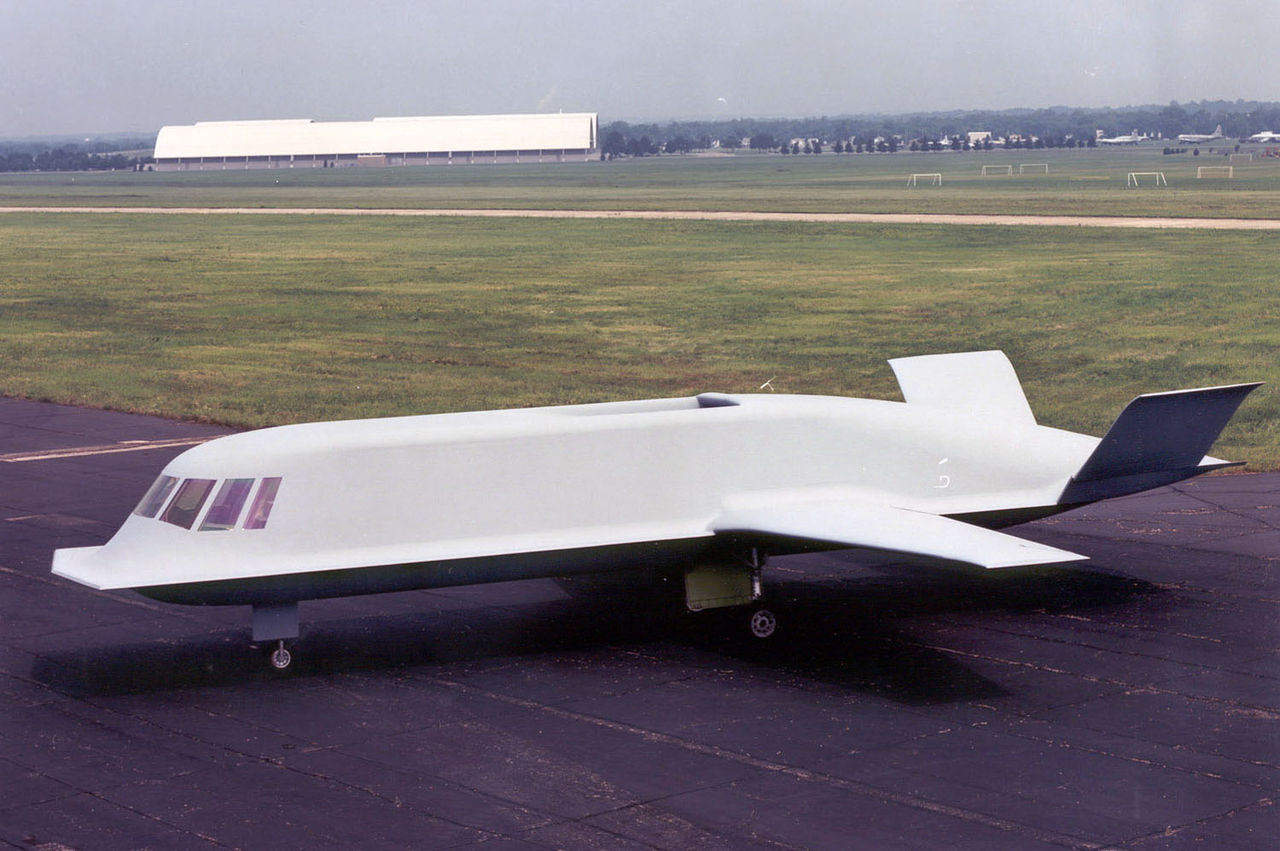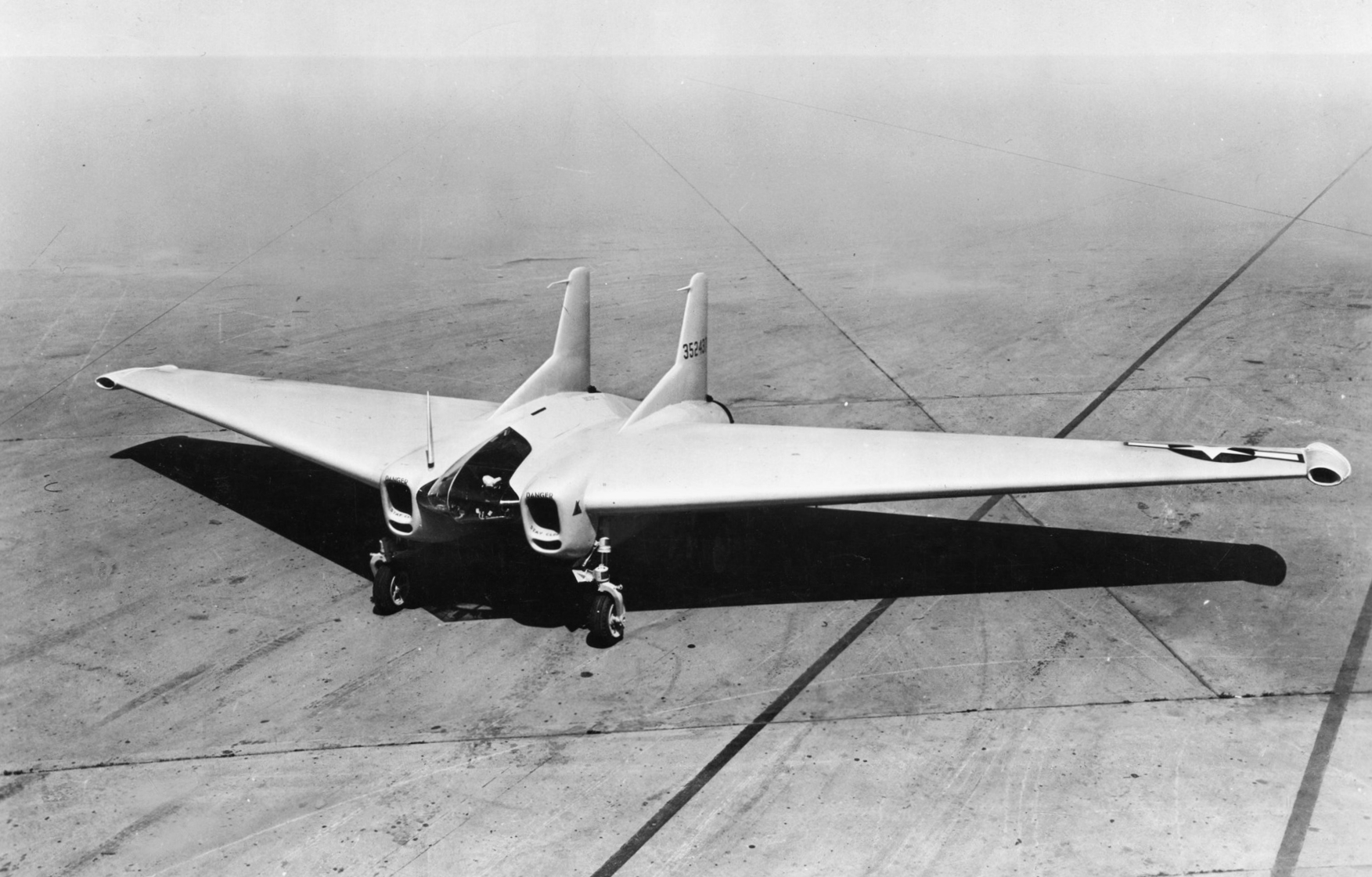Over the decades the manufacturer Grumman has been an indispensable source of high-quality fighters for the US Navy. On only two occasions have Grumman planes failed to deliver and been rejected outright by their biggest customer. The first was the XF5F-1 Skyrocket, and the second was a craft so ill-conceived that it would eventually be re-designated as a test bed to be purposefully destroyed. The XF10F-1 Jaguar was a shambles of a plane and quite probably Grumman’s greatest embarrassment.
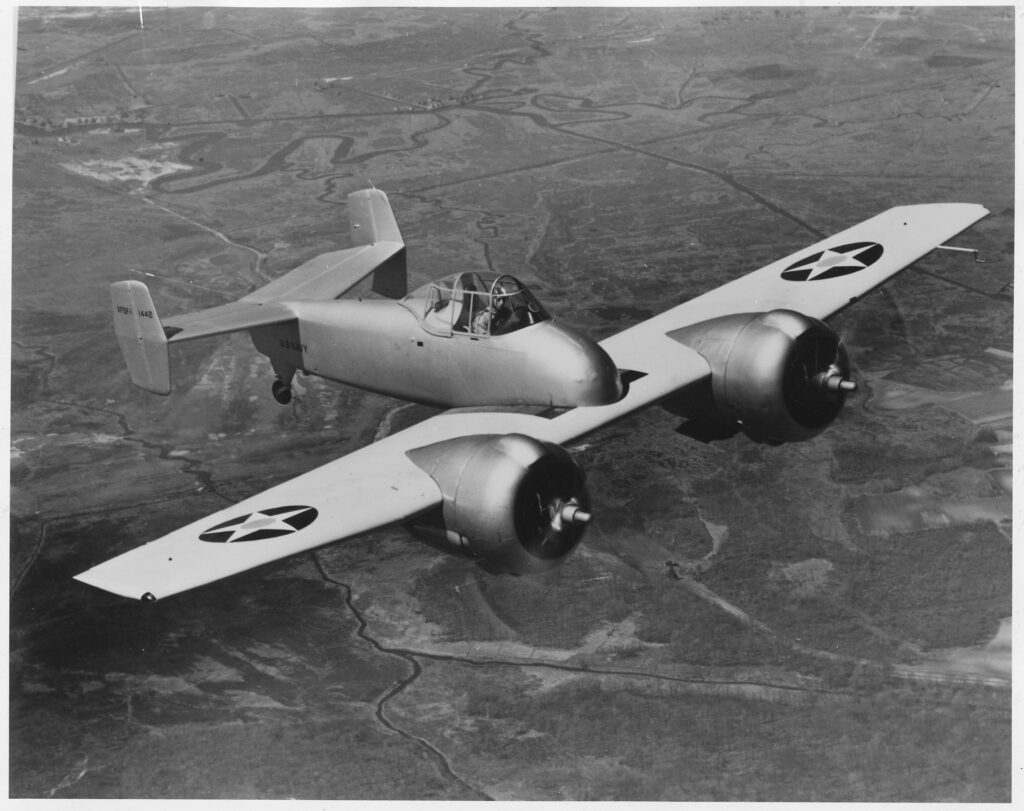
Contents
Development
Hoping to create the world’s first variable-sweep fighter, on September 3rd 1947 the blueprints for the Jaguar, initially referred to as Design 83, were submitted to the US Navy.
Read More: F-16XL – The Crank Wing Experiment
Essentially a redesigned version of the F9F Panther, Navy evaluators were sufficiently impressed by what they saw and as a result, letters of intent were issued in December 1947 and April 1948 requesting additional design work and the assembly of 2 working XF10F-1 prototypes, with flight assessments set for an ambitious August 1949 date.
However, development was delayed by several issues with the Westinghouse J-40 turbojets and the Navy’s insistence on constantly changing their specifications, meaning that the final design was only agreed upon over 3 years later in December 1950.
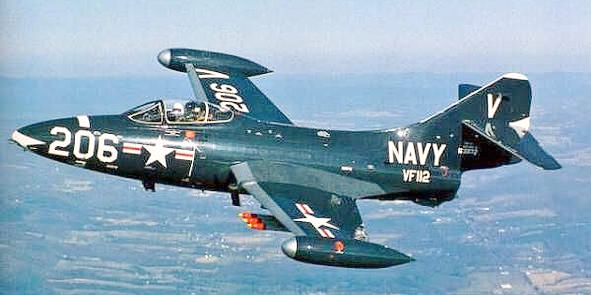
During the interval, because of Navy demands for radar, better range, and heavier armaments to name a few, Design 83 was so heavily revised it became unrecognizable. Its span was increased from 32 feet and 4 inches to 50 feet and 7 inches, its take-off weight was upped from 18,730 pounds to 31,255 pounds, and nothing remained of its proposed modified delta-wing.
In July 1949 The designers had instead opted to fit it with a variable-sweep wing called a ‘swing wing’ which theoretically would be able to change the sweep to different angles to enable it to perform optimally at both transonic and low velocities.
The variable sweep concept was by no means new, and had been first attempted by the Germans during World War Two via the Messerschmitt P.1101. But unlike its teutonic counterpart, whose wings could only be changed manually on the ground and between 35 degrees and 45 degrees, the XF10F-1 Jaguar was to have a fully automated system that could be activated mid-air.
The outbreak of the Korean War in June 1950 provided a renewed sense of urgency, leading to the awarding of a contract in August 1950 for two F10F-1 prototypes and 10 pre-production aircraft.
They were to be propelled by the Westinghouse XJ40-WE-6 or by the more up-to-date J-40-WE-8 if available. Later contracts were even bigger in scope, stipulating that Grumman was to provide the US Navy with 123 F10F-1s and 8 F10F-1Ps, which were all to be furnished with the J-40-WE-8.
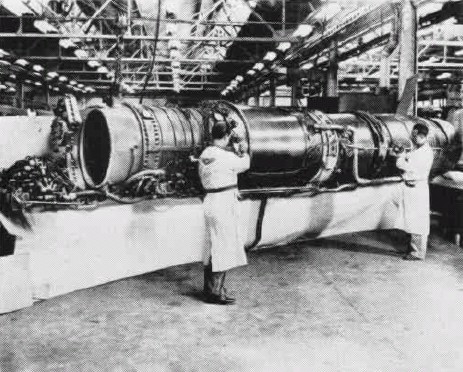
But with massive pressure being put on Grumman by the US Navy to produce such fighter, the development of XF10F-1 was inexorably rushed. The resulting plane unveiled in 1952 would soon become the laughing stock of the aviation world.
XF10F-1
With space for a single pilot, the Grumman XF10F-1 Jaguar was 54 feet long, 16 feet and 3 inches high, and had a maximum weight of 35,450 pounds, a loaded weight of 27,450 pounds, and an empty weight of 20,426 pounds.
Read More: The Quest to Build a Flying Submarine
The swing wing moved hydraulically via a single pivot point from fore to aft and could change the sweep angle from a minimum of 13.5 degrees to a maximum of 42.5 degrees.
The lower setting was to be selected to ensure stable handling characteristics at low speeds and would work in conjunction with full-span slats and Fowler flaps extending over 80 percent of the trailing edge, whereas the higher preset was to be employed only at transonic speeds.
Unlike later airplanes that employed a similar mechanism and made it so only the outer panel moved, the entire wing of the Jaguar was wired to pivot using an overly complex arrangement of moving panels that filled in any gaps.
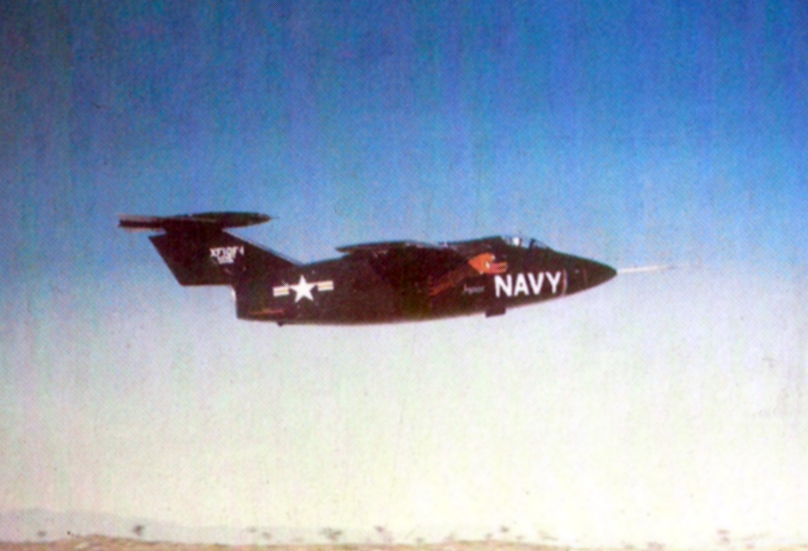
Even so, at full sweep the wings only made a marginal difference to performance since any gains were reduced by the extra weight of the wing sweep device.
Elsewhere lateral control was managed by two sets of four ailerons supported by spoilers located below and above the wing. The spoiler system however was so ineffective it later had to be removed, with the small ailerons left behind providing a very poor roll response.
Longitudinal control was determined by a delta tailplane driven by a servoplane tab at the front of a long acorn fairing. In order to manoeuvre it the pilot controlled a small delta wing airfoil at the tip of the tail bullet, but the arrangement was so poorly thought out that there was a noticeable delay between the pilot’s input and the tail surface, which often caused Pilot Induced Oscillation (PIO), meaning that the Jaguar was uncontrollable most of the time.
Other features included an undercarriage that retracted inside the belly of the fuselage, beneath the compressor segment of the engine. The fuselage as well as the wings housed fuel receptacles that would have a total maximum volume of 1,573 gallons, which was further supplemented by an additional 300 gallon drop tank that could be attached to underwing pylons.
Perhaps the worst decision however was to install the Jaguar with a woefully underpowered Westinghouse J-40 turbojet, which gave it a maximum speed of 710 miles per hour, a cruising speed of 478 miles per hour, a maximum range of 2,090 miles, a service ceiling of 45,800 feet, although it was never flown above 31,500 feet.
The production version of the XF10F-1 Jaguar, which was never made, was to be equipped with an AN/APS-25 radar in the nose, four 20 mm cannons in the forward fuselage, and on the pylons with twenty-four 2.75 inch FFAR rockets, six 5 inch HPAG rockets, or bombs of up to 2,000 pounds.
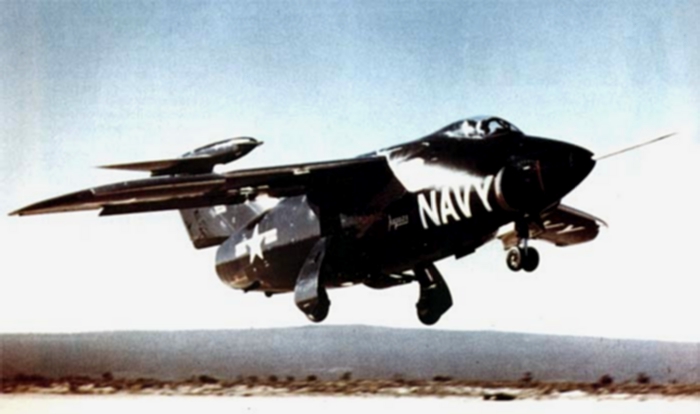
Testing
Following a battery of low-speed taxi evaluations and system checks at Bethpage, on April 16th 1952 the first iteration of the Jaguar, registered with the serial number BuNo 128311, was partially disassembled and loaded aboard a Douglas C-124 transporter for further assessment in the Mojave Desert at Edwards Air Force Base.
Because of the rushed nature of the whole project, the Jaguar was installed with an XJ40-WE-6 without an afterburner, giving it a paltry maximum thrust of 6,800 pounds.
Read More: Convair FISH & KINGFISH – The Stealth Parasites
Nevertheless, piloted by seasoned test pilot Corwin H ‘Corky’ Meyer, the Jaguar made its maiden flight on May 19th 1952; just the first in a myriad of abject failures. Lasting for just 16 minutes the test was cut short by the malfunction of its retractable slats, excessive changes in trim with flap movement, and persistent rudder buffetting.
The second examination was no better and had to be abruptly ended with a dead stick landing after the electronic fuel control unit broke down. Additionally marred by major longitudinal control difficulties because of the horizontal tail design, issues with the airframe, and engine faults, the only saving grace was that the wing sweep mechanism seemed to work without a hitch.
Subsequently, many attempts were made to fix stability problems including the grafting of a horizontal ventral fin on the rear fuselage sides and the testing of larger horizontal tail surfaces.
In April 1953 the replacement of the powered F9F-6 swept horizontal surfaces for a fitted delta tailplane produced promising data, but before it could be fully explored the Navy cancelled the production contracts it had so eagerly given out a few years prior.
Tellingly, the individual who spearheaded its termination was the Navy’s project officer, the very person who was usually the most loyal to any project.
Moreover, the news that all aeroplanes fitted with J-40 engines had to be grounded would prove to be the final death knell of the entire endeavour, which had never really produced anything of note.
Failure
When trials were officially wrapped up on April 25th 1953 with an uneventful thirty-second flight, the XF10F-1 had clocked only 67 minutes of airtime in 32 flights over a year. Also, with the Bell X-5 having taken to the air 11 months before the debut of the XF10F-1, the Jaguar missed out on being the first plane to fly with variable geometry wings.
Furthermore, the underpowered non-afterburning Westinghouse engine had provided underwhelming results, for the Jaguar had not been able to exceed Mach 0.86 in level flight or Mach 0.97 in a dive.
Consequently, the XF10F-1 prototype and its 90% complete follow-up were transported to the Naval Air Material Center in Philadelphia where they were rather ignominiously used to test carrier deck crash barriers, while their static test airframes were used for target practice by tank guns.
Read More: Boeing X-32 – So Ugly it Failed
The later NASA/Ames AD-1 from the late 1970s and early 1980s explored the swing-wing with considerably more success, proving itself a true pioneer of the concept and superior to the legion of botch jobs, most notably the XF10F-1 Jaguar, that had come before it.
If you like this article, then please follow us on Facebook and Instagram.
Specifications
- Crew: one pilot
- Length: 55 ft 9.6 in (17.008 m)
- Wingspan: 50 ft 8 in (15.44 m)
- Swept wingspan: 36 ft 8 in (11.18 m)
- Height: 16 ft 3 in (4.95 m)
- Empty weight: 20,425 lb (9,265 kg)
- Max takeoff weight: 35,450 lb (16,080 kg)
- Powerplant: 1 × Westinghouse XJ40-WE-8 turbojet, 6,800 lbf (30 kN) thrust
- Maximum speed: 710 mph (1,140 km/h, 620 kn)
- Range: 1,670 mi (2,690 km, 1,450 nmi)



